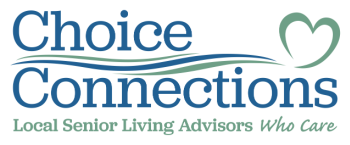Nursing Homes vs. Residential Care
As a senior living advisor, I meet with families every week. Sometimes people need physical assistance with their personal care. These high care options can include help with bathing, getting dressed, transferring from a wheelchair and assistance with using the bathroom. When people need help around the clock, they often ask if they need a nursing home. Throughout Minneapolis and Saint Paul, there are care options that offer a higher level of physical assistance without needing to move to a nursing home.
Residential Care
Residential care homes are ideal for older people who need care and prefer a family home environment. In this environment, the ratio of staff to residents is often higher than a traditional assisted living. It is more consistent staff because less people work there. Here is why people desire this option:
- A small setting with an average of 5-8 people living in a household
- Live in a residential neighborhood
- Family feel offers opportunities for socializing with housemates
- High staff to resident ratios
- Manage complex medical diagnosis including transfer assistance, dementia care, management of oxygen or other medical equipment
Residential care homes are licensed in different ways, and all have state licensing requirements and oversite. Because they offer a higher staff ratio, the cost of living there can be higher but often like a nursing home. Many of these homes are owned by nurses and other medical professionals, making them a great option.
Enhanced Care Suites
Some traditional assisted living facilities offer care suites or enhanced care. In this smaller segregated area of the building, people who need a higher care level can get additional help. These “neighborhoods” are typically made up of 6 apartments or studio units. There is a designated staff person for the residents living in this space. Because the ratio of staff to residents is smaller (typically, 1 caregiver to 6 residents) a lot of care can be given to those living there. People may live in care suites when:
- They need more staff time for care
- They are at risk of falling frequently
- They require more hands-on assistance for their activities of daily living
- They need two people or a mechanical lift for transferring
- They are receiving hospice care
Because enhanced care is in an assisted living environment, the residents can access the other amenities in the community. Like some residential care homes, enhanced care may be able to manage complex diseases like type-two diabetes, feeding tubes and other treatments.
Nursing Homes
Nursing homes offer the highest level of care, including licensed nurses available twenty-four hours a day. This makes it more expensive too. This is a more clinical setting compared to the more home-like setting of enhanced care and/or residential care. When people have multiple diagnoses that require medical personnel, a nursing home can be the best option. Skilled nursing homes offer:
- Licensed nurses around the clock
- Complex wound care management
- Intravenous medication management
- Feeding tube management
- Intensive therapy in transitional care
Which is the Best?
Assistance with activities of daily living can be provided in enhanced care and/or residential care homes. Nursing homes have specialized medical equipment readily available with staff trained to meet these needs. Most people can live in a less restrictive setting, but there are times when around the clock nursing care is necessary.
The best care option depends upon the individual. Finances, lifestyle, and health diagnosis must be considered. The senior living advisors at Choice Connections can help you determine your best options for senior care. Whether you want to live in Maple Grove, Woodbury, Eden Prairie, Apple Valley or anywhere in between we can assist you and your family.

